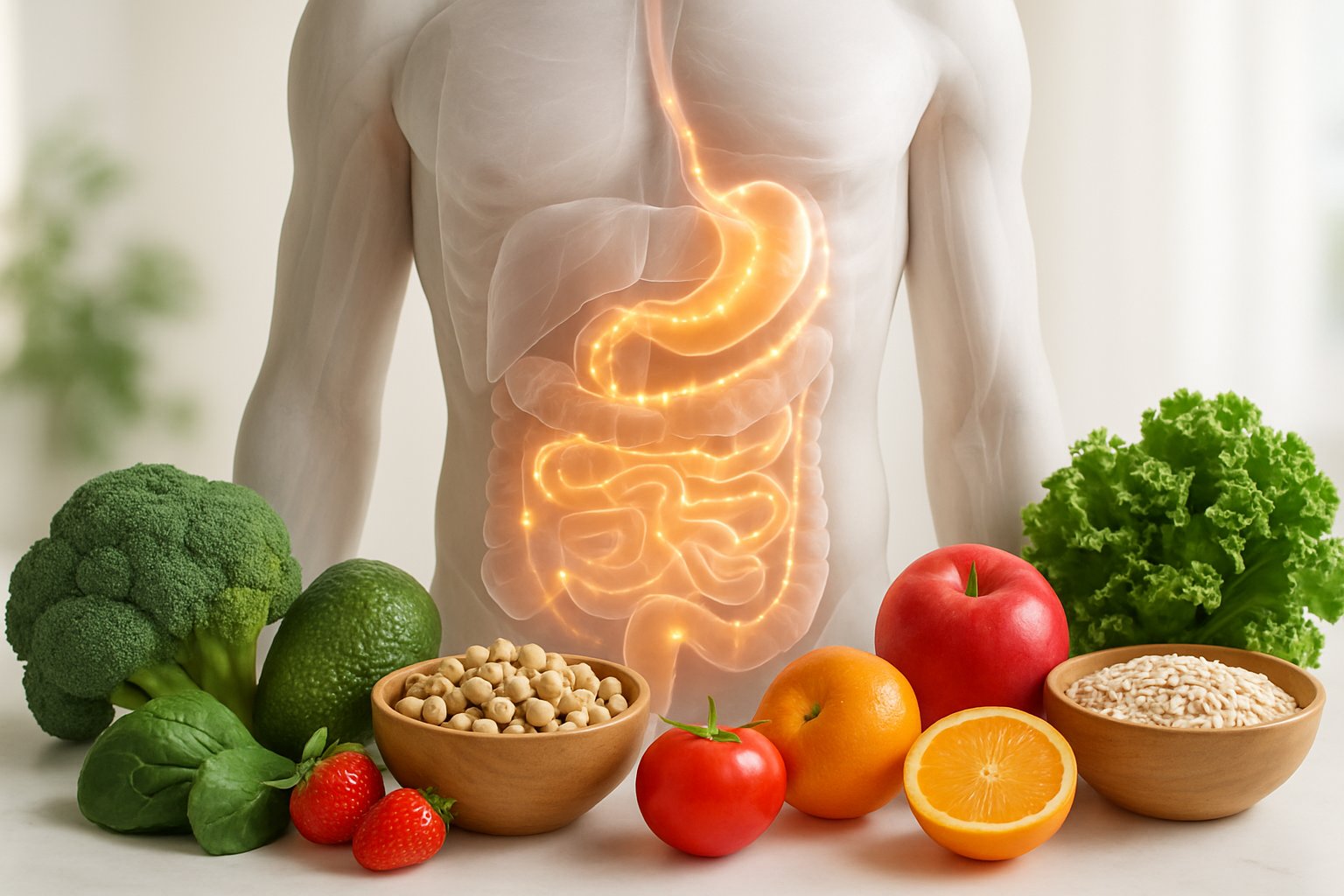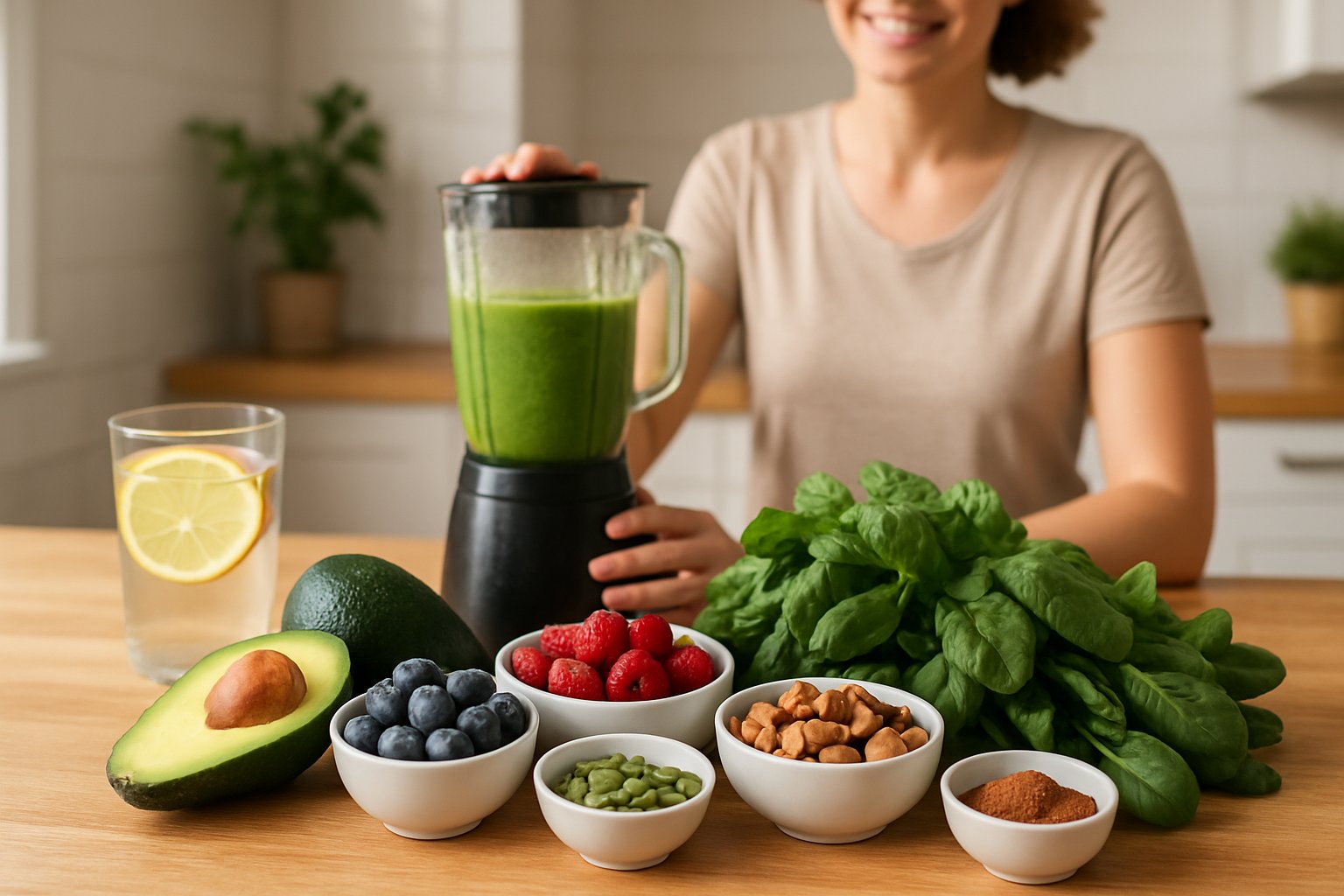Natural GLP-1 boosting is possible through foods high in soluble fiber, lean protein, and healthy fats like omega-3s. Certain supplements including psyllium, berberine, and curcumin show promise for increasing GLP-1 levels. While natural methods can help, prescription medications typically provide stronger and longer-lasting GLP-1 effects.
GLP-1 medications like Ozempic and Wegovy have become popular for weight loss, but their high costs and side effects leave many people searching for alternatives. Yes, there are natural ways to boost your body’s GLP-1 levels through specific foods, supplements, and lifestyle changes that can help with appetite control and blood sugar management.

Your body naturally produces GLP-1, a hormone that slows stomach emptying, reduces hunger signals to the brain, and helps regulate blood sugar. While prescription medications keep GLP-1 levels elevated for longer periods, certain dietary approaches can help increase GLP-1 levels naturally[1].
Research shows that eating foods rich in soluble fiber, lean protein, and healthy fats can stimulate natural GLP-1 production. Some supplements like berberine, curcumin, and psyllium may also help, though most studies are still preliminary. These natural methods offer a more affordable approach to supporting the body’s weight management and blood sugar control systems.
How GLP-1 Works in the Body

GLP-1 is a natural hormone that controls blood sugar and appetite through multiple pathways in the body. This hormone slows digestion, increases insulin production, and signals the brain to reduce hunger cravings.
What Is GLP-1 and Its Function
GLP-1 stands for glucagon-like peptide-1[2], a hormone the body naturally produces in the small intestine. The intestinal cells release this hormone within minutes after eating food.
GLP-1 is a natural hormone that the body makes after eating[3]. It belongs to a group of hormones called incretins that help maintain healthy metabolism.
The hormone travels through the bloodstream to reach different organs. It binds to specific GLP-1 receptors found in the pancreas, stomach, and brain. These receptors trigger various responses that help control blood sugar levels and body weight.
GLP-1 levels naturally rise after meals and fall between eating periods. The hormone breaks down quickly in the body, lasting only a few minutes in the bloodstream.
GLP-1’s Role in Appetite and Blood Sugar Regulation
GLP-1 helps regulate blood sugar by increasing insulin secretion and slowing down how quickly the stomach empties[2]. It also signals the brain that the body feels full.
The hormone works on blood sugar control in three main ways:
- Increases insulin production – The pancreas releases more insulin when blood sugar levels rise
- Reduces glucagon release – Less glucagon means the liver produces less glucose
- Slows gastric emptying – Food moves more slowly from the stomach to the small intestine
GLP-1 slows how fast the stomach empties, so people feel full longer[1]. This delayed gastric emptying helps prevent blood sugar spikes after meals.
The hormone also sends direct signals to the brain’s appetite control center. This reduces hunger and food cravings between meals.
Why GLP-1 Is Important for Weight Management
GLP-1 plays a key role in weight management through its effects on satiety and metabolism. The hormone helps people eat less by increasing feelings of fullness and reducing appetite.
GLP-1 sends signals to the brain to reduce hunger and appetite[1]. This natural appetite suppression can lead to lower calorie intake throughout the day.
The slower gastric emptying caused by GLP-1 means people stay satisfied longer after eating. This reduces the urge to snack or overeat at the next meal.
GLP-1 medications like Ozempic, Wegovy, and Mounjaro work by mimicking these natural effects. These medications include Wegovy (semaglutide), Ozempic (semaglutide), Victoza (liraglutide), and Mounjaro (tirzepatide)[1].
People with obesity or type 2 diabetes often have lower natural GLP-1 levels. This reduced hormone activity can contribute to poor blood sugar control and difficulty managing weight.
Natural Approaches to Boosting GLP-1

Your body can produce more GLP-1 through specific dietary choices, targeted supplements, and lifestyle modifications. The most effective approach combines high-fiber foods, healthy fats, lean proteins, and regular physical activity to enhance this hormone’s natural production.
Dietary Strategies to Increase GLP-1
Fiber-Rich Foods Form the Foundation
Soluble fiber[1] creates the strongest impact on GLP-1 production. This type of fiber dissolves in water and forms a gel-like substance in the digestive tract.
High-fiber foods that boost GLP-1 include:
- Fruits: Apples, bananas, berries, and citrus fruits
- Vegetables: Artichokes, asparagus, carrots, and Brussels sprouts
- Legumes: Lentils, beans, chickpeas, and black beans
- Whole grains: Oats, barley, quinoa, and brown rice
Fermentable fiber feeds beneficial gut bacteria, which produce short-chain fatty acids. These compounds signal the intestines to release more GLP-1.
Healthy Fats Enhance Hormone Response
Monounsaturated fats and omega-3 fatty acids naturally increase GLP-1 levels[1]. Avocados, olive oil, nuts, and fatty fish like salmon provide these beneficial fats.
Flaxseed oil and chia seeds offer plant-based omega-3s. Almonds and other nuts contain both healthy fats and fiber for dual benefits.
Protein Supports GLP-1 Production
High-protein foods trigger GLP-1 release while maintaining muscle mass. Lean protein sources include poultry, eggs, fish, and plant-based options like tofu.
Calcium enhances this effect, making dairy products particularly effective for those who tolerate them well.
Supplements and Functional Foods
Evidence-Based Supplements
Psyllium[1] provides concentrated soluble fiber and represents one of the most studied GLP-1-boosting supplements. Taking psyllium daily in husk or powder form requires adequate water intake to prevent digestive issues.
Berberine shows promise in animal studies[1] for increasing GLP-1 secretion. Human research suggests modest weight loss of about 4 pounds with regular use, though results vary.
Curcumin from turmeric[1] may improve blood sugar control by enhancing GLP-1 release. Studies used doses of 1,500 mg daily for therapeutic effects.
Traditional Plant Compounds
Ginseng has been used for energy and focus[1] but may also boost GLP-1 levels. Animal studies show improvements in blood sugar and cholesterol after 4 weeks of supplementation.
Research on these supplements remains limited in humans. Most evidence comes from animal studies or small human trials.
Lifestyle Habits That Support GLP-1 Production
Exercise Amplifies GLP-1 Response
High-intensity exercise increases GLP-1 production more effectively than moderate activity. Both aerobic exercise and resistance training contribute to better glucose control and metabolic health.
Exercise also improves GLP-1 sensitivity, helping the body respond better to the hormone’s signals for appetite control.
Sleep and Stress Management
Quality sleep supports healthy hormone production, including GLP-1. Poor sleep patterns can lead to GLP-1 resistance, reducing the hormone’s effectiveness.
Chronic stress disrupts metabolic processes that regulate appetite and blood sugar. Managing stress through relaxation techniques supports optimal GLP-1 function.
Hydration and Meal Timing
Adequate hydration helps fiber work effectively in the digestive system. Water supports the formation of the gel-like substance that triggers GLP-1 release.
Eating a balanced diet with consistent meal timing helps maintain steady GLP-1 production throughout the day. Regular eating patterns support better glucose control and appetite regulation.
Frequently Asked Questions

People often have specific questions about which foods and supplements can boost GLP-1 levels naturally. The research shows certain proteins, fibers, and plant compounds may help increase this important hormone.
What foods have been shown to naturally increase GLP-1 levels?
Lean protein sources like fish, chicken, and eggs[1] have been shown to boost GLP-1 levels effectively. These foods help maintain muscle mass while supporting hormone production.
Healthy fats also play an important role. Avocados, olive oil, and fatty fish contain monounsaturated fats and omega-3 fatty acids that naturally increase GLP-1.
Foods high in soluble fiber[1] are particularly effective. Oats, beans, lentils, and chia seeds help boost GLP-1 production in the digestive system.
Fruits and vegetables with high water content also support GLP-1 release. These foods provide fiber and nutrients while helping people feel full longer.
Are there any supplements proven to enhance GLP-1 production in the body?
Psyllium is one of the most effective supplements[1] for boosting GLP-1 levels. This soluble fiber supplement should be taken with plenty of water to prevent constipation.
Berberine shows promise in animal studies[1] for increasing GLP-1 secretion. Human studies suggest it may help with modest weight loss of about 4 pounds when taken at 500mg daily.
Curcumin, found in turmeric, may improve blood sugar control[1] by increasing GLP-1 release. Studies used doses of 1,500mg daily in people with diabetes.
Most supplement research has been done in animals. More human studies are needed to confirm how well these supplements work for GLP-1 production.
What dietary habits may contribute to higher natural secretion of GLP-1?
Eating protein with meals helps trigger GLP-1 release. Aiming for about 30% of daily calories from protein can boost hormone levels naturally.
Combining protein with calcium may enhance GLP-1 production even more. Dairy products like Greek yogurt provide both nutrients together.
Gradually increasing fiber intake over time helps avoid digestive upset. Starting slowly allows the body to adjust to higher fiber amounts.
Drinking plenty of water throughout the day supports fiber digestion. This helps soluble fiber form the gel-like substance that boosts GLP-1 levels.
Is there a link between herbal teas and increased GLP-1 activity?
Yerba mate tea contains compounds that may increase GLP-1 production[1]. Small human studies suggest it might help with fat loss and appetite reduction.
The research on yerba mate used 1 gram of extract three times daily. This equals about 3 grams total per day for potential benefits.
Most studies on herbal teas and GLP-1 have been done in animals. More human research is needed to confirm these effects in people.
Green mate, which contains similar compounds to yerba mate, may also support GLP-1 activity. Both teas come from similar plant sources.
Which foods should be avoided if trying to boost GLP-1 naturally?
Saturated fats don’t increase GLP-1 levels as effectively[1] as healthy fats. Butter and high-fat meats may be less helpful than olive oil or avocados.
Omega-6 fatty acids also appear less effective for GLP-1 production. These fats are found in many processed vegetable oils and fried foods.
Highly processed foods often lack the fiber and protein needed for GLP-1 release. These foods may also contain ingredients that don’t support hormone production.
Simple sugars and refined carbohydrates don’t provide the sustained GLP-1 response that complex carbs do. Whole grains work better than white bread or pastries.
What are the most effective natural supplements for GLP-1-mediated weight loss?
Psyllium fiber appears to be one of the most effective natural supplements[1] for increasing GLP-1 levels. It provides concentrated soluble fiber that directly boosts hormone production.
Wild bitter gourd extract showed promising results[1] in a small study of 42 people. Participants took 4.8 grams daily and saw decreased waist size and better blood sugar control.
Ginseng may help increase GLP-1 levels[1] while supporting energy and focus. Animal studies show improvements in blood sugar and cholesterol after 4 weeks.
The research on natural supplements is still limited. Most studies are small or done in animals, so results may vary in different people.
References
- Access to this page has been denied. https://www.goodrx.com/conditions/weight-loss/how-to-increase-glp-1-naturally Accessed October 22, 2025
- Beyond the Ozempic Buzz: How GLP-1s Actually Work – Westchester Medical Center Health Network. https://www.wmchealth.org/living-well/beyond-the-ozempic-buzz-how-glp-1s-actually-work Accessed October 22, 2025
- What Is GLP-1 And How Does It Work In Our Body?. https://www.healthifyme.com/blog/what-is-glp-1-and-how-does-it-work-in-our-body/ Accessed October 22, 2025
